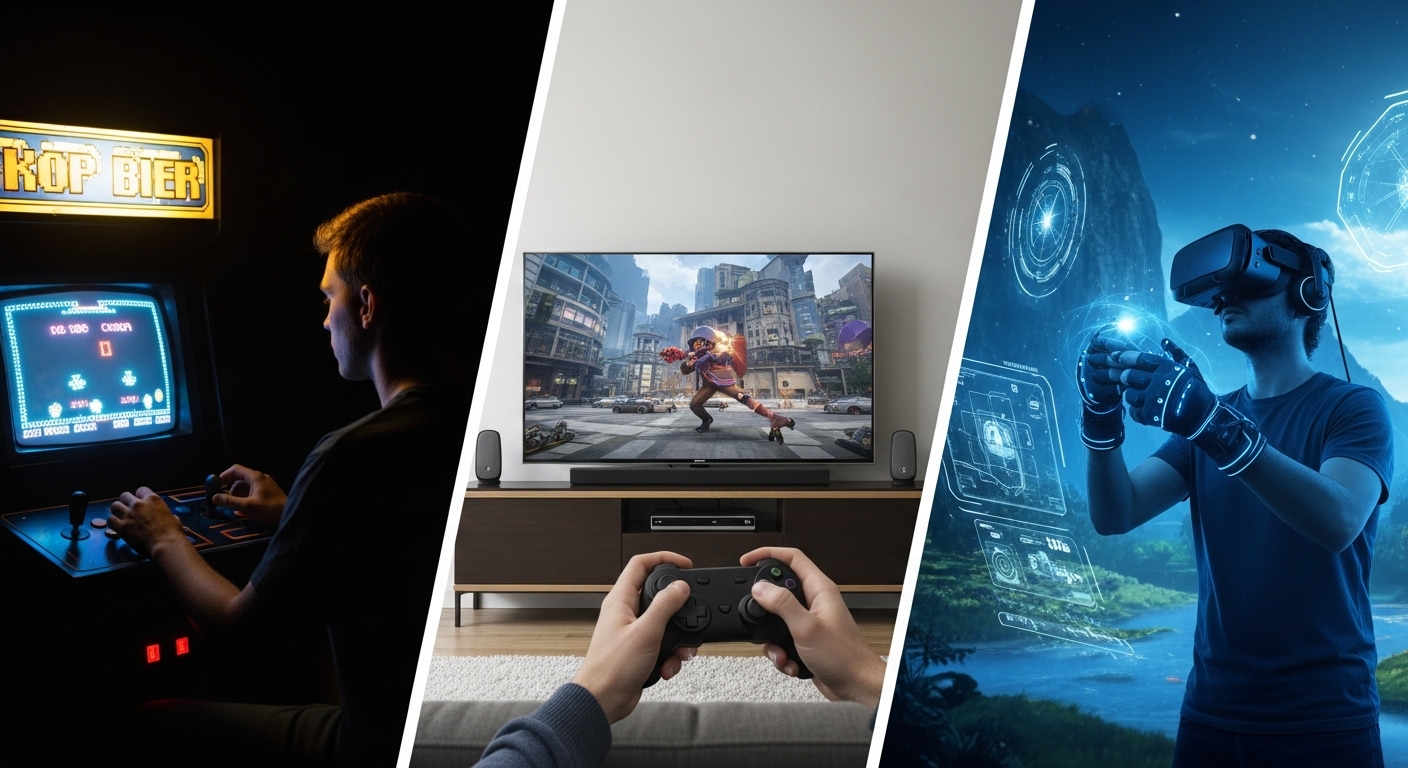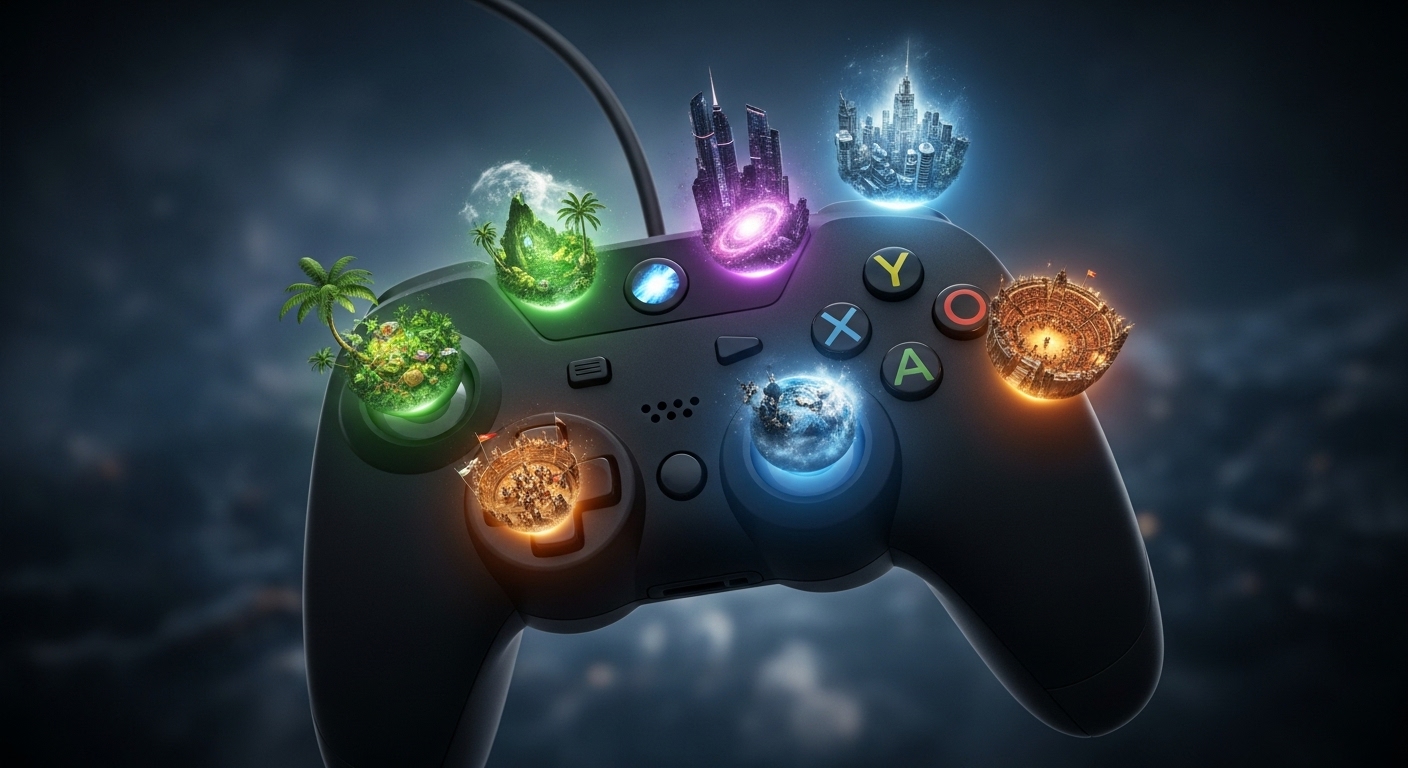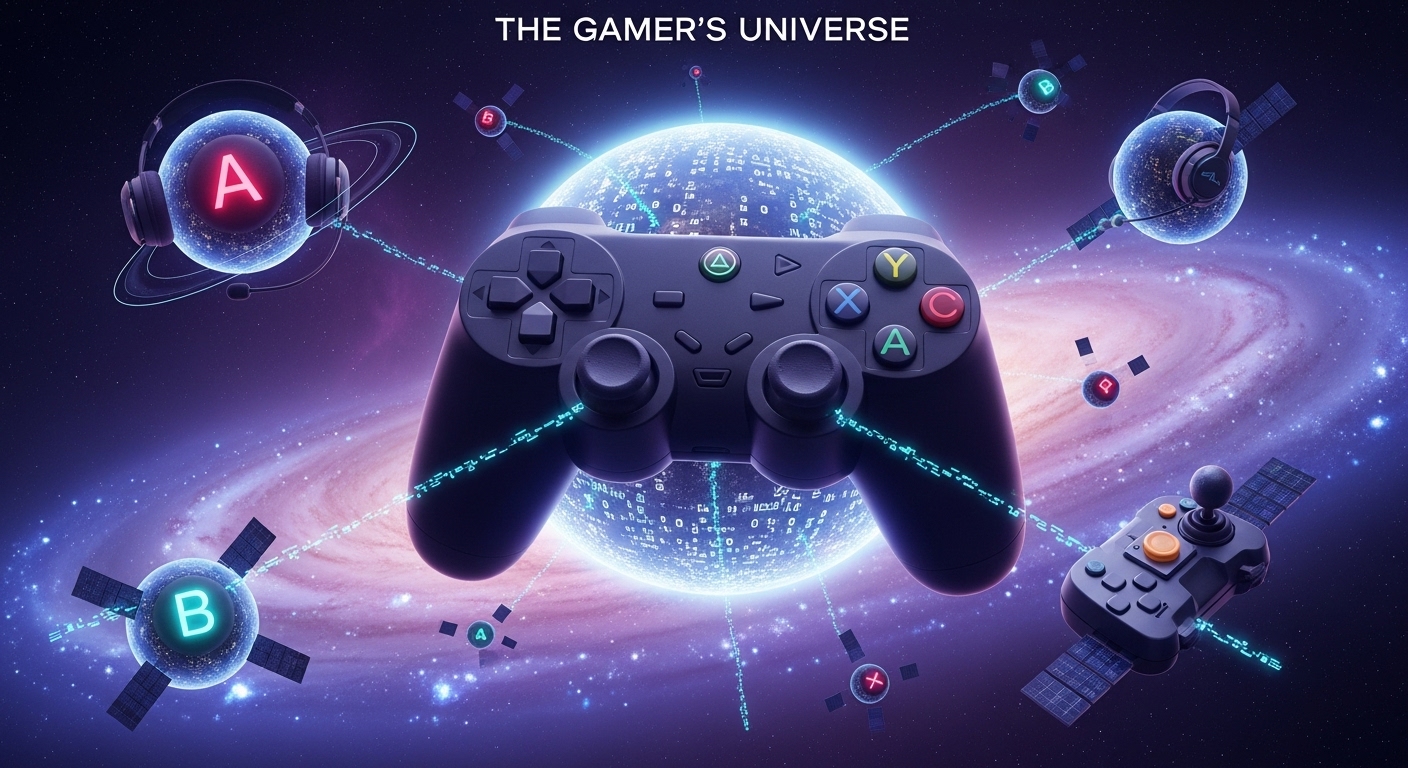Gaming has grown from a simple pastime into one of the most powerful cultural and technological forces of our time. It is no longer confined to dimly lit arcades or the corners of our childhood bedrooms. Today, gaming spans continents, connects millions of people, fuels economies, and shapes entire generations. It has become an art form, a science, and a medium of storytelling unlike any other. From the pixelated heroes of the 1980s to the photorealistic worlds of the 2020s, the journey of gaming is a fascinating reflection of human creativity, innovation, and community.
The Humble Beginnings
The story of gaming begins not with consoles or computers, but with curiosity. In the mid-20th century, scientists and engineers began experimenting with interactive programs on early computers. One of the first was “Tennis for Two” created in 1958 by physicist William Higinbotham. It was a simple simulation of tennis displayed on an oscilloscope, but it ignited a spark. In 1962, “Spacewar!” became one of the first digital games to gain popularity among computer enthusiasts. Though primitive by modern standards, it set the stage for what would soon become a global phenomenon.
In the 1970s, gaming found its first home in the arcade. Games like “Pong,” released by Atari in 1972, became sensations. Players could finally compete against each other in public spaces, inserting coins for a few minutes of electronic entertainment. These early games were simple yet addictive, and their success laid the foundation for an industry that would soon explode. As technology advanced, consoles began entering homes, making gaming more accessible than ever before. Systems like the Atari 2600 introduced the idea of interchangeable cartridges, allowing players to own and collect different titles. It was the birth of home gaming as we know it.
The Golden Age of Gaming
The 1980s are often referred to as the golden age of video games. It was a decade of colorful characters, innovative design, and unforgettable soundtracks. Games like “Super Mario Bros.,” “The Legend of Zelda,” and “Pac-Man” didn’t just entertain—they defined a generation. Nintendo, Sega, and other pioneers competed fiercely to capture the hearts of players. The living room became a battlefield of pixels and imagination.
What made this era so special was the sense of discovery. Every new game felt like stepping into an unexplored world. Developers were limited by technology, but they compensated with creativity. The simplicity of the hardware forced them to focus on gameplay, storytelling, and design. As a result, many classics from this era remain iconic even today. Retro gaming communities still celebrate these titles, preserving them as cultural treasures.
The golden age also saw the emergence of gaming as a social activity. Arcades were more than just entertainment venues—they were gathering places where friends met, rivalries formed, and high scores became badges of honor. The sound of machines beeping, coins clinking, and players cheering created an atmosphere that modern gamers still romanticize.
The Rise of Home Consoles
As the 1990s arrived, gaming began to evolve rapidly. The introduction of 16-bit consoles like the Super Nintendo Entertainment System (SNES) and Sega Genesis brought richer graphics and more complex gameplay. Franchises such as “Sonic the Hedgehog,” “Final Fantasy,” and “Street Fighter” flourished, pushing the boundaries of what games could achieve.
The decade also introduced 3D graphics, which revolutionized the industry. Titles like “Super Mario 64” and “The Legend of Zelda: Ocarina of Time” redefined player interaction and world exploration. It was no longer about moving left or right on a flat screen; players could now step into fully realized three-dimensional worlds. This leap changed everything.
Meanwhile, Sony entered the scene with the PlayStation, introducing CD-based games that allowed for higher storage and cinematic experiences. Storytelling became deeper and more emotional, with games like “Final Fantasy VII” showing that gaming could evoke real tears and introspection. This was the era when gaming began to rival movies and books in its narrative depth.
The PC Gaming Revolution
While consoles dominated living rooms, another revolution was quietly brewing on personal computers. PC gaming offered an entirely different experience—one rooted in customization, complexity, and community. Titles like “Doom,” “Warcraft,” and “Diablo” became sensations, each bringing innovations that would define genres for decades.
The PC became the birthplace of multiplayer gaming as we know it. Through local area networks and early internet connections, players could compete and cooperate across distances. Games like “Counter-Strike” and “StarCraft” built early esports scenes, with players mastering strategies and mechanics at near-professional levels. The sense of global competition was born here.
Moreover, PC gaming nurtured modding communities—groups of fans who modified games to create new content. This culture of creativity not only extended the lifespan of games but also inspired many future developers. Some of today’s biggest titles, including “PlayerUnknown’s Battlegrounds” and “Dota 2,” trace their origins back to fan-made mods.
The Online Era Begins
The turn of the millennium brought with it a massive transformation: the rise of online gaming. With the internet becoming faster and more accessible, players were no longer confined to local matches. Titles like “Halo 2,” “World of Warcraft,” and “Runescape” connected millions across the globe. For the first time, a gamer in one country could battle, trade, or chat with someone on the other side of the planet.
This connectivity reshaped the gaming landscape. Online communities began to form, leading to the birth of virtual friendships, clans, and guilds. Players didn’t just play together—they lived entire digital lives within these worlds. Massive multiplayer online role-playing games (MMORPGs) like “EverQuest” and “World of Warcraft” became more than just games; they were living, breathing ecosystems with their own economies and cultures.
The rise of online gaming also gave birth to esports as a legitimate phenomenon. Competitive gaming tournaments began to attract crowds and sponsorships, turning skilled players into celebrities. What began as small LAN events in basements evolved into massive arenas filled with cheering fans.
The Age of Mobile and Casual Gaming
If the early 2000s were about global connectivity, the 2010s were about accessibility. The rise of smartphones brought gaming into everyone’s pocket. Suddenly, millions of people who had never considered themselves gamers were spending hours playing “Angry Birds,” “Candy Crush,” and “Clash of Clans.” Mobile gaming democratized the industry, reaching demographics that consoles and PCs had missed.
Mobile games also changed the economics of the industry. The free-to-play model, supported by microtransactions, allowed developers to make games accessible while still earning revenue. Though controversial, this model transformed gaming into a multi-billion-dollar business. It also blurred the line between casual and hardcore players.
Simultaneously, indie developers began to thrive. Digital distribution platforms made it easier for small teams to release games without big publishers. Titles like “Undertale,” “Stardew Valley,” and “Hollow Knight” proved that passion and creativity could rival blockbuster budgets. Indie games reminded players of the heart and soul that defined gaming’s early days, emphasizing artistry and emotion over spectacle.
The Era of Streaming and Esports
In recent years, gaming has evolved beyond just playing—it has become a form of entertainment to watch. Platforms that allow gamers to broadcast their gameplay have created a new kind of celebrity: the streamer. Millions tune in daily to watch others play, laugh, and share their experiences in real time. Streaming has made gaming more social, creating a bridge between players and audiences.
Esports, once a niche scene, has now become a mainstream industry. Professional players earn salaries, compete in global tournaments, and represent teams sponsored by major corporations. Games like “League of Legends,” “Dota 2,” “Valorant,” and “Fortnite” have turned competition into spectacle, complete with commentators, live events, and fan merchandise.
The rise of streaming and esports has redefined what it means to be a gamer. It is no longer just about playing but also about participating in a global culture. For many, gaming has become a career, a community, and a lifestyle.
The Art of Storytelling in Games
One of the most remarkable evolutions in gaming has been the advancement of storytelling. Modern games rival cinema in emotional depth, character development, and thematic complexity. Titles like “The Last of Us,” “Red Dead Redemption 2,” and “God of War” have proven that games can tell stories that touch hearts and challenge minds.
Unlike passive media, games invite players to be part of the story. Choices matter, consequences unfold, and players form bonds with virtual characters. This interactivity creates a powerful connection between the audience and the narrative. Gaming is the only medium where the story reacts to you.
The writing, acting, and direction in modern games are often on par with the best films and novels. Developers collaborate with Hollywood talent, employ cinematic techniques, and use cutting-edge technology to deliver immersive experiences. The line between player and protagonist continues to blur, and storytelling in games keeps pushing artistic boundaries.
The Power of Gaming Communities
Gaming is no longer an individual hobby—it’s a shared experience. Online communities have become digital homes for millions of players who gather to discuss, create, and collaborate. From fan art to mods to tournaments, gamers constantly contribute to the culture they love.
Communities also drive inclusivity and representation. More than ever, diverse voices are shaping the narratives and characters within games. Developers are recognizing the importance of creating worlds that reflect all players, regardless of background, gender, or identity. This shift is not just moral—it’s creative. When everyone’s story can be told, the possibilities for gaming expand infinitely.
The Future of Gaming
Looking ahead, gaming’s future seems limitless. Advances in technology continue to reshape how we play and experience games. Virtual reality (VR) and augmented reality (AR) promise to make gaming even more immersive, blurring the line between the digital and physical worlds. Artificial intelligence is creating smarter NPCs, more adaptive worlds, and personalized gameplay experiences.
Cloud gaming is another frontier, allowing players to stream games instantly without expensive hardware. This technology could make high-end gaming accessible to anyone with an internet connection, eliminating traditional barriers.
Beyond technology, the emotional and social roles of gaming will continue to grow. Games are being used in education, therapy, and even activism. They can teach empathy, improve coordination, and build communities across cultures. In many ways, gaming reflects humanity’s endless drive to connect and create.
Gaming as a Culture, Not Just an Industry
At its core, gaming is about more than profit, pixels, or technology—it’s about expression. It is a reflection of who we are, what we fear, and what we dream of. It allows people to explore worlds beyond imagination, to be heroes, to fail, to learn, and to connect.
The culture surrounding gaming is as diverse as its players. From competitive gamers seeking mastery to casual players finding solace in virtual farms, from indie developers creating passion projects to massive studios building cinematic universes, gaming welcomes all.
It has evolved from being a hobby to being an identity, from entertainment to art, from pastime to profession. The phrase “just a game” no longer applies. For millions, gaming is life—a way to express creativity, connect with others, and explore the infinite possibilities of digital imagination.
Conclusion
The world of gaming is a testament to how far human imagination can go. From the first blip of “Pong” to sprawling open worlds that simulate entire galaxies, gaming has transcended boundaries of art, technology, and storytelling. It continues to grow, evolve, and inspire. Each generation of players contributes to a grand legacy of creativity and connection.
Gaming is not just the future—it is the present. It’s the canvas of our digital age, painted with pixels and powered by passion. Whether you play to escape, compete, or connect, one thing is certain: gaming is now an inseparable part of our human story, and its journey has only just begun.



